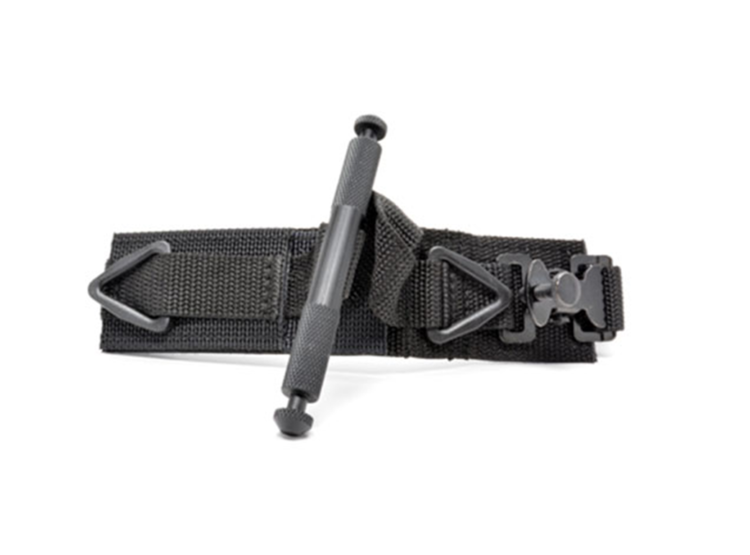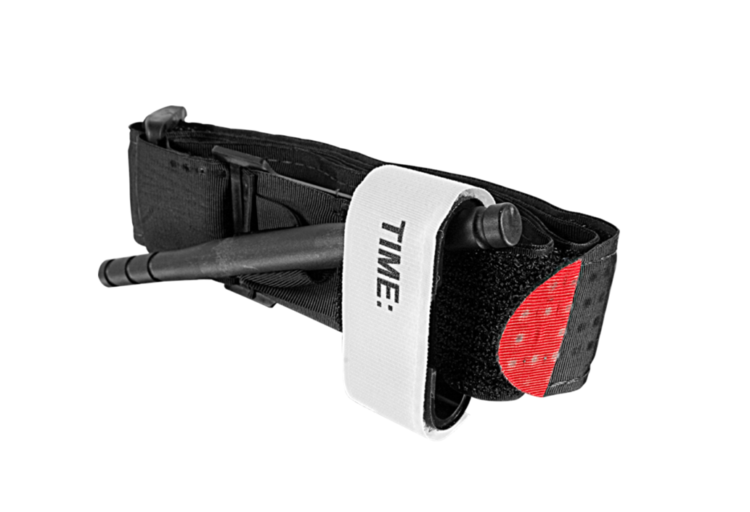Intro
New stories in the media bring back familiar conversations. Maybe I am biased (I know I am), but I am also right. When it comes to trauma, whether its mass murder or individual accidents, having the right medical gear and the training to use that gear is the critical piece in surviving a medical emergency. There are several pieces of kit that make up a good first aid kit (and a first aid kit should go beyond the Tylenol and moleskin, but that’s a topic for another time), but a tourniquet is, arguably, the first piece that should be in any good bag. It’s not the answer to all the problems, but it is THE answer to some big problems. So which one do I use? Like any good concept, products start coming out of the woodwork claiming to be the best or, at least, better than the last one. So lets talk it out and then you can decide for yourself what works best for you and your needs.
A Petit-type tourniquet, Europe, 1780-1805, designed by Parisian surgeon, John-Louis Petit (1674-1760), who attached a circular bandage to a screw and a leather pad in order to apply pressure to a specific point.
A little history
The tourniquets of old were simple but ineffective. WWII doctors deemed them ineffective and advised against there use. The, mainly, consisted of a thin strap and a buckle. They did not apply enough pressure to occlude and artery and gave a false sense of confidence. They were also applied with little or no training. So, inevitably, a patient would continue to bleed and eventually die. Fast forward to Viet Nam and little had changed. Not much thought was given to tourniquet science and it was still taught to use the device as a “last resort” because, if it were applied, the patient would lose the affected limb.
Vietnam Era tourniquet
It wasn’t until the 1980’s that science starting researching tourniquets and their use in combat/ pre hospital medicine really took off early into the Global War on Terror in the early 2000’s. Through the efforts of the Committee on Tactical Combat Casualty Care (CoTCCC) standards for tourniquet application were developed and recommendations were made to drive the use of tourniquets in the pre-hospital/ tactical environment. Tourniquet effectiveness and decrease transport times from the point of injury to surgical assets have drastically decrease preventable death from bleeding.

What does science tell us?
Like I a mentioned before, there are no shortage of tourniquet options. So what makes an effective tourniquet (according to real science)? 1. The band needs to be 1.5 inches wide 2. It needs to have a windlass device to increase mechanical advantage. 3. It needs to have the ability to secure the windlass device once it is tightened. Without going into the specifics of the science, the larger the tourniquet width the less pressure it will take to occlude the artery. If the tourniquet isn’t 1.5 inches wide or greater than the device will “cut “ into the tissue as opposed to squeezing it. The goal is to defeat the muscle around the blood vessel and squeeze it closed preventing blood flow. A wider tourniquet also decreases the amount of pressure on the tissue. Less pressure decreases the risk of damage to the tissue. As of today, there are only 2 tourniquets approved by the CoTCCC that have been used extensively and are proven to be effective, The Combat Application Tourniquet (CAT) and the Special Operations Forces Tactical Tourniquet (SOFTT).
The Combat Application Tourniquet (CAT)
Conclusion
I am happy that the current conversations are about what type of tourniquet to carry and not if you should carry one. With that being said, a tourniquet is a piece of kit that you want to know will work EVERYTIME to need to it right? Much like your firearm. There are several devices on the market that claim, with good science, to work. And, in full disclosure, the probably will work. But what they don’t have is “experience”. What cannot be reproduced in a lab when testing medical devices are all the conditions that it will be exposed to in the hands of the end user. That can only come once that device is given to the medic, or corpsman, or police officer and it is used in the most extreme conditions, under real stress, and after if it put on real patients. The CAT and SOFTT have that in spades. They have been deployed to every war zone since 9/11 and been used thousands of times with great success. That is why they continued to be the tourniquets of choice for the DOD, NATO, and hundreds of law enforcement, EMS, and fire departments as well as thousands of concerned and enlightened citizens. Don’t let good marketing trump good science when selecting medical equipment that you might have to use on yourself or your loved ones.
Just as important as what you carry is the training you should have on how to use it. Tourniquets don’t apply themselves, and they are not a foolproof device. If you carry a medkit you need to know how to use it properly. Science changes and evolves. Do your research and find a reputable training company in your area. Learn what gear works for your needs and become familiar with it BEFORE you need to use it. When blood is leaving the body is no time to be reading the instructions.
If you have comments or questions or need help finding a credible instructor feel free to contact me at kevin@preparedmed.com or visit websites like https://www.stopthebleedingfoundation.org
[amazon_link asins=’B003EGD8YC,B01FJFY2Z4′ template=’ProductCarousel’ store=’spoup-20′ marketplace=’US’ link_id=’2df60948-b738-11e7-8bb6-3544deee4345′]





